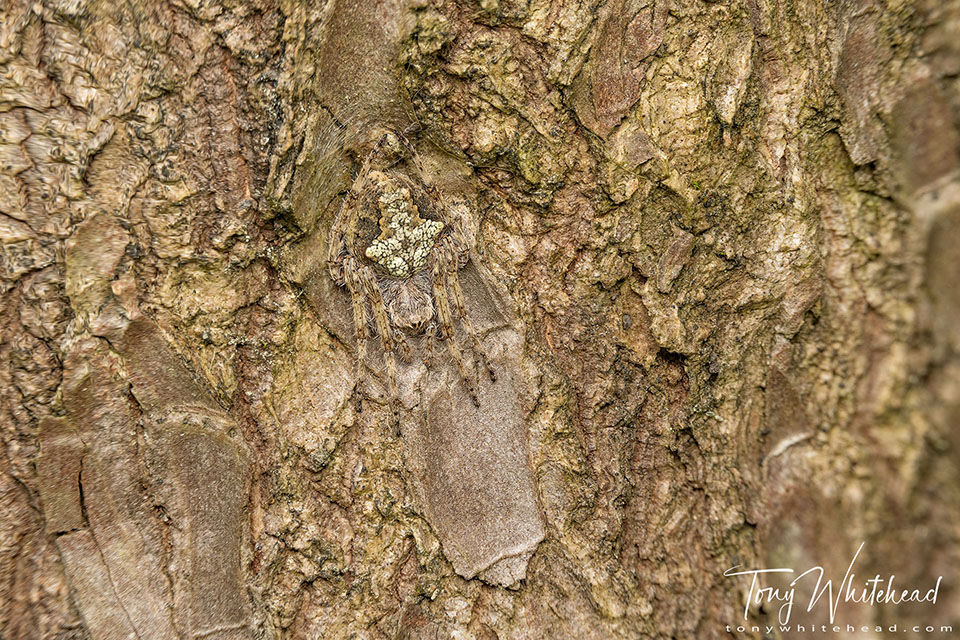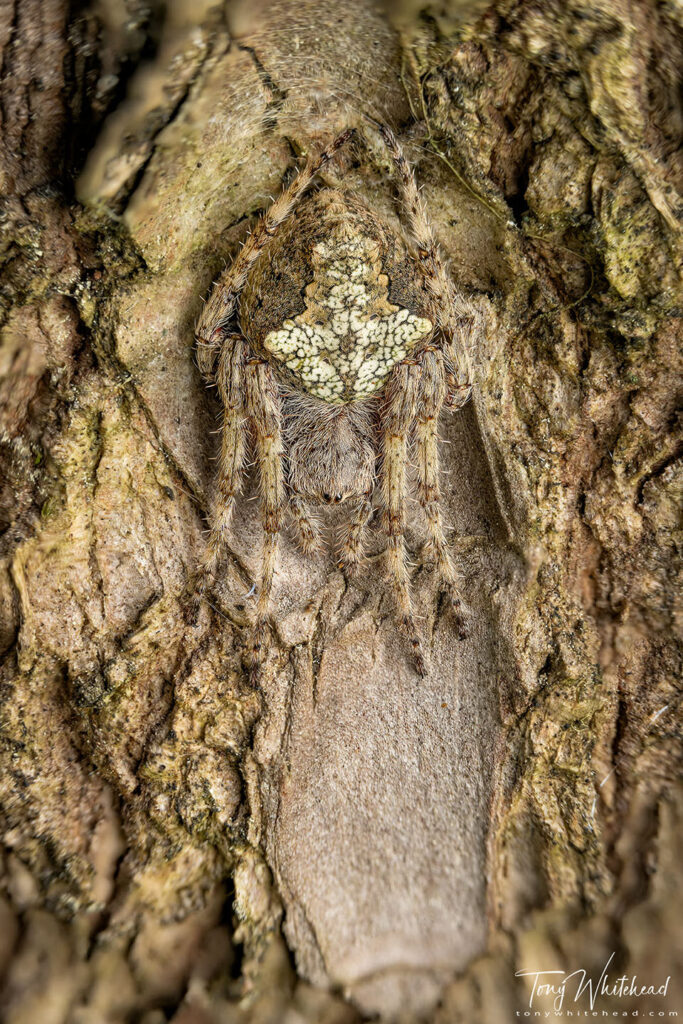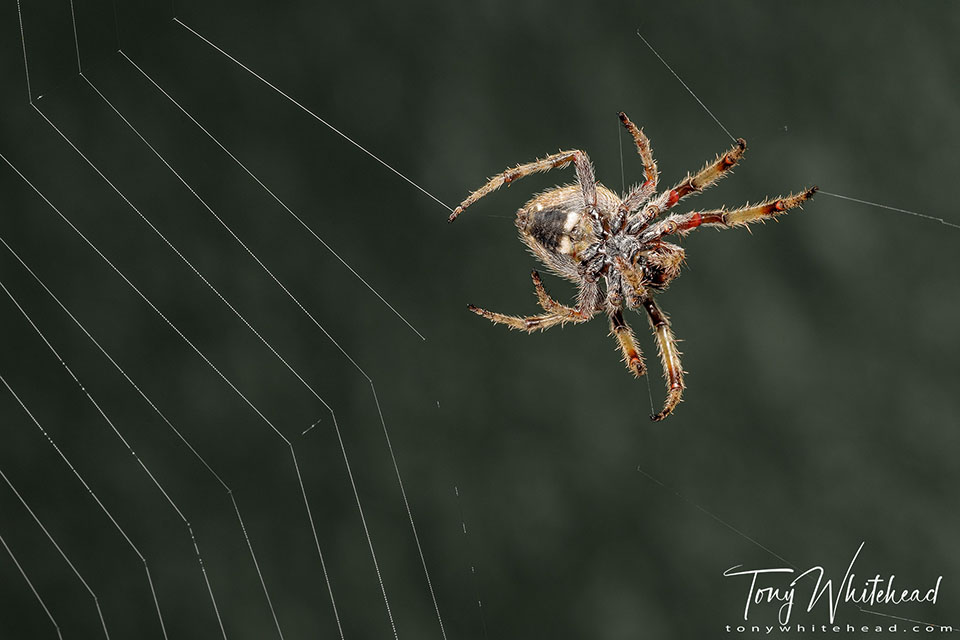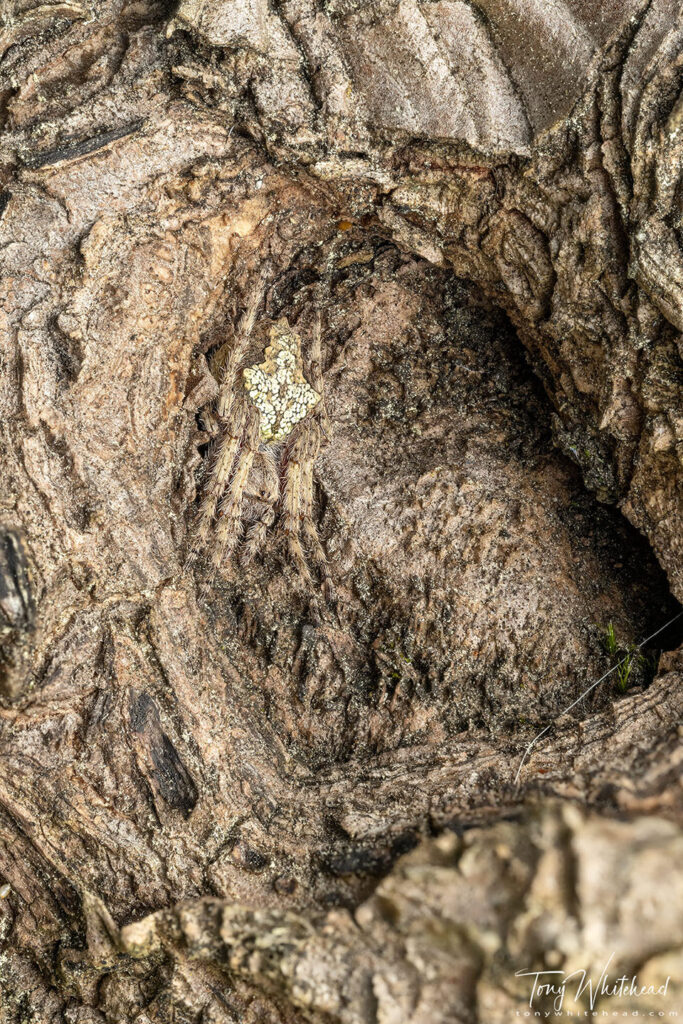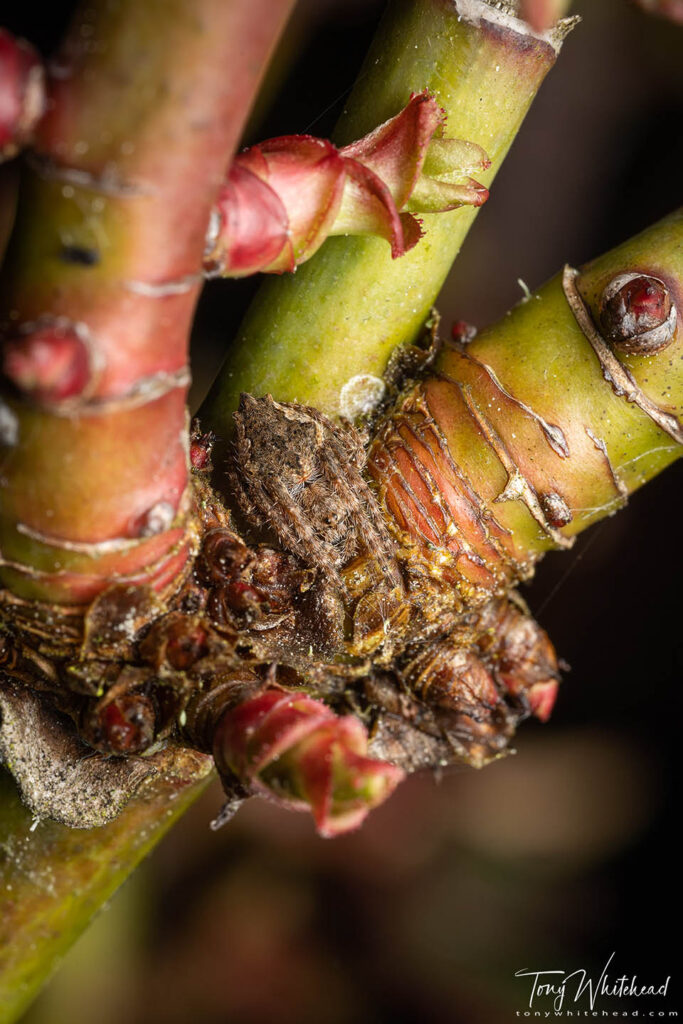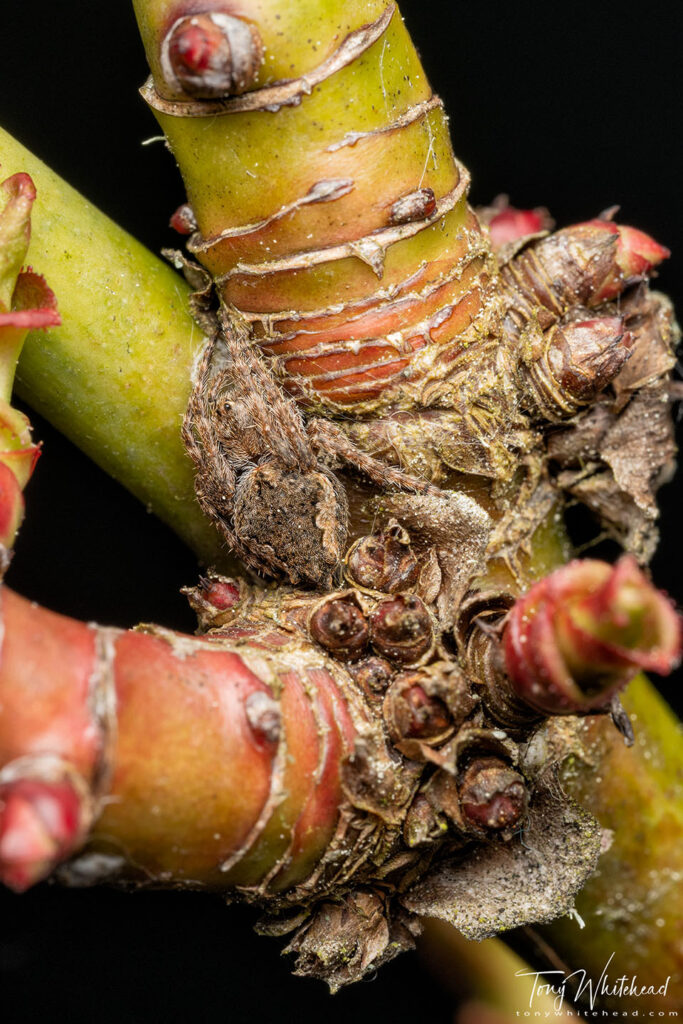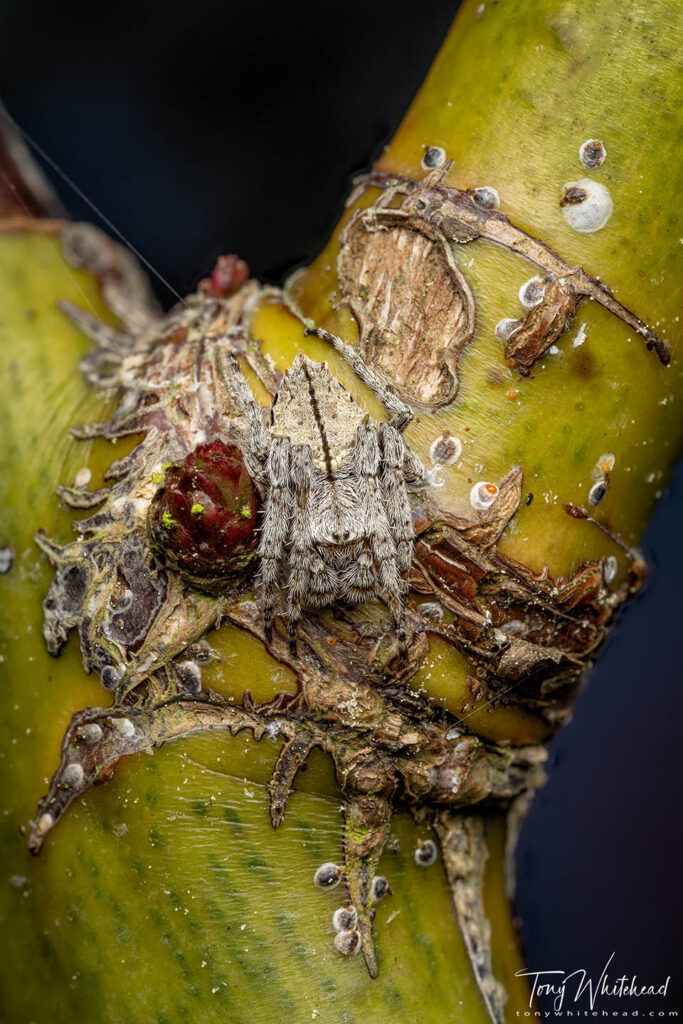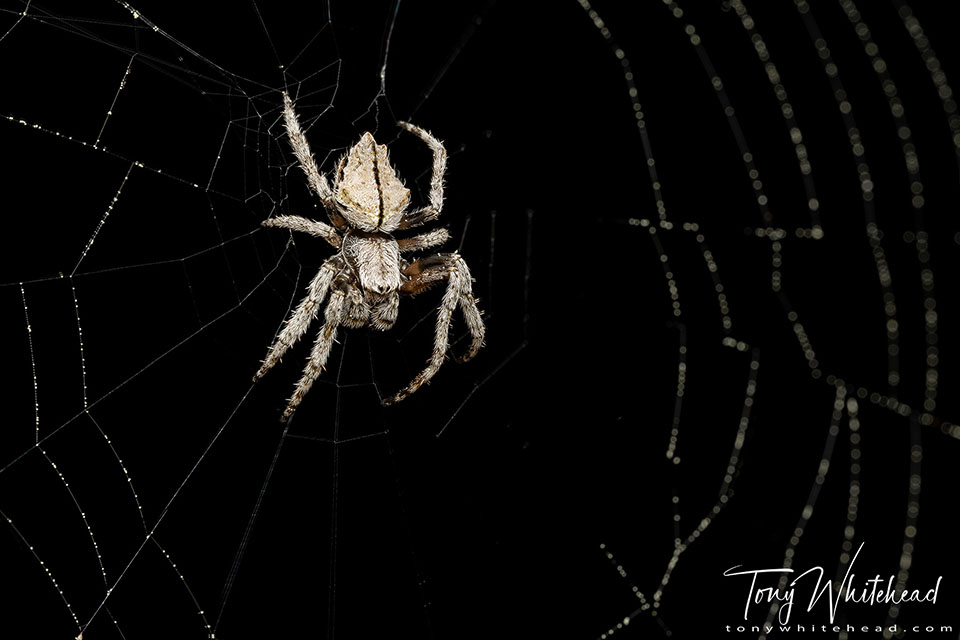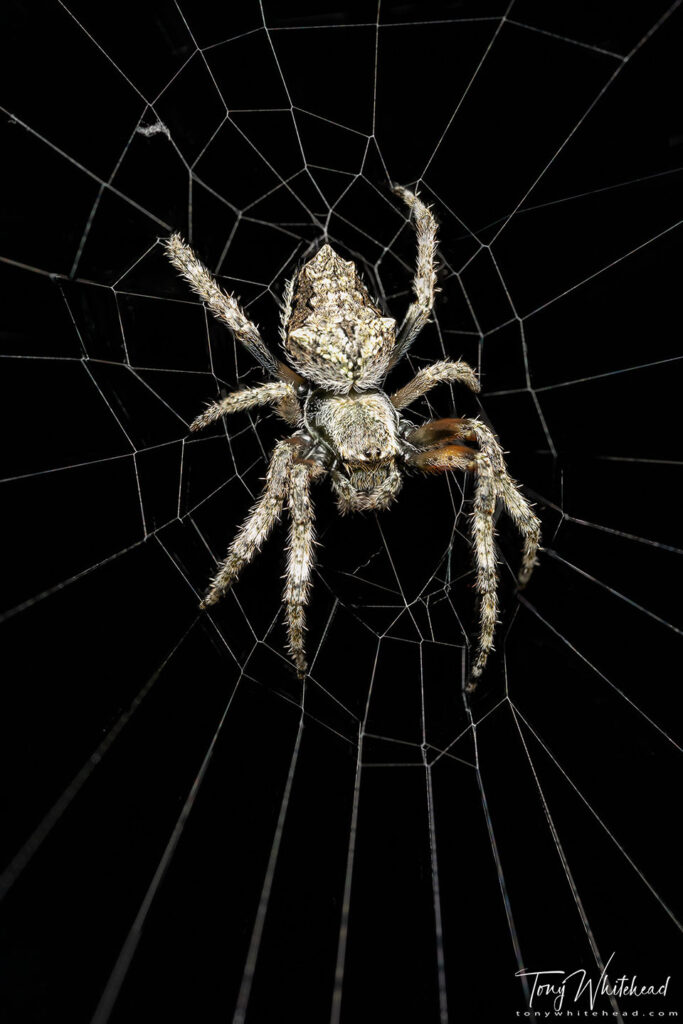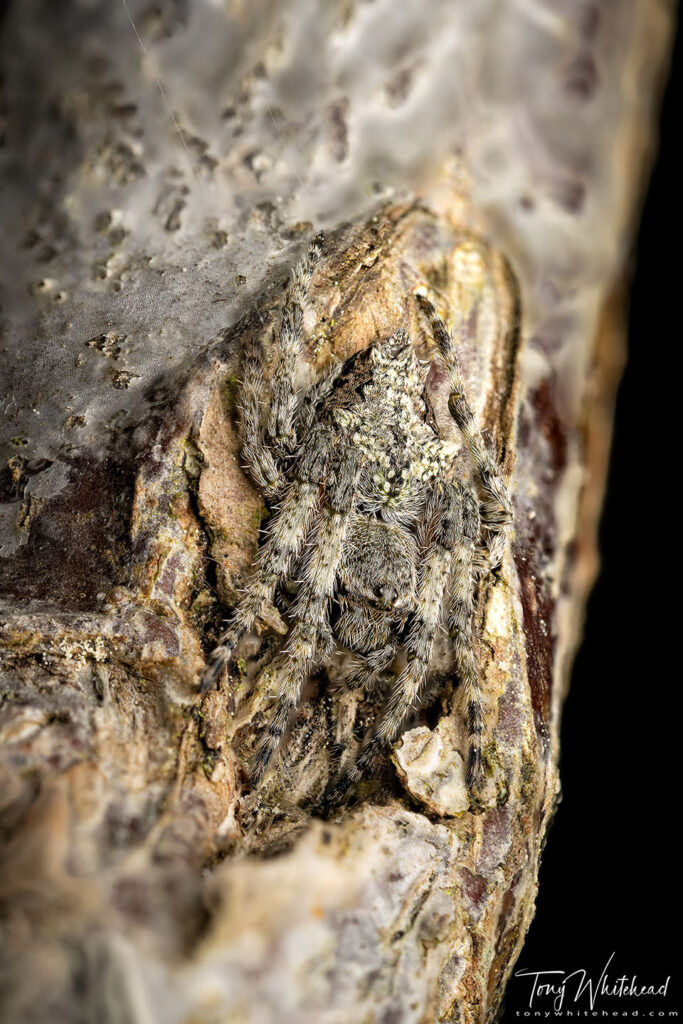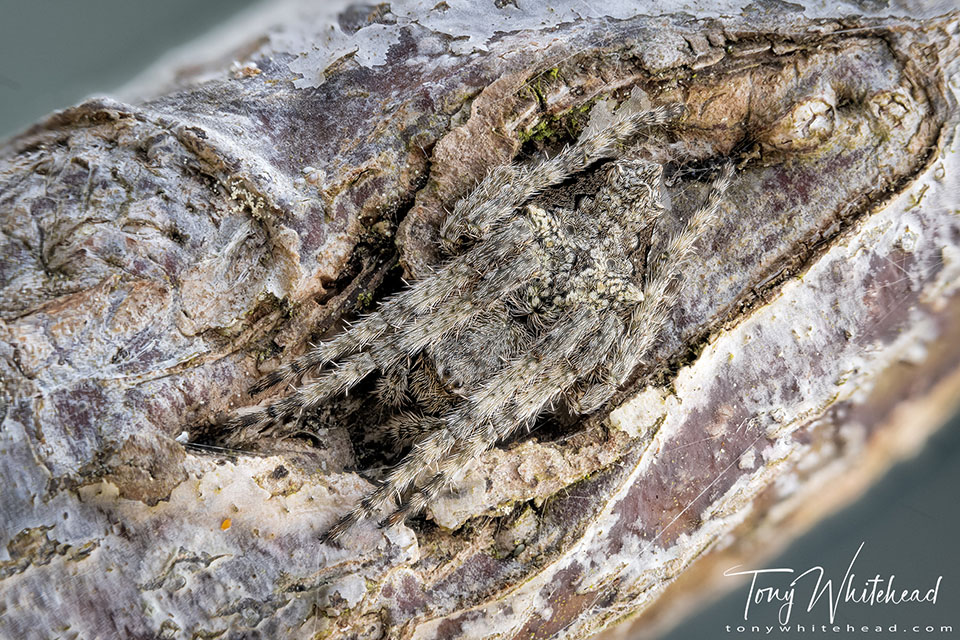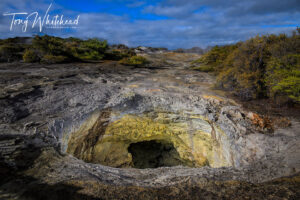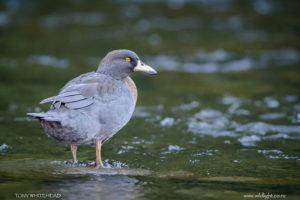Following on from my Backyard Macro Safari post I have been spent a bit of time trying to locate the daytime resting places of some of the spiders that share my habitat to demonstrate the camouflage of Garden Orbweb spiders. While easy to locate at night on their webs, the daylight locations are a challenge to find due to their excellent camouflage. The image I have chosen to head this post shows that well and is in deference to my arachnophobe followers so that they are not confronted suddenly by a spider and can choose not to scroll further. This is the spider that features in the first and final images of the last post. This next image is a little closer to make the spider more easily visible.
This next photos shows the same spider at work making her web at night. Much easier to find!
It is interesting but not surprising that the spiders choose a substrate that suits their coloration and texture. The question is how do they do that with their apparently limited visual acuity and colour perception? Presumably you don’t need much acuity to detect tone and textures and there are a relatively limited range of colours in their habitat. Whatever the explanation the end result is that they succeed in effective camouflage against their predators (and human observers). If they don’t succeed I guess the birds find them before we do.
I have photographed the above individual in 2 different resting sites so there seems to be some fluidity in choice possibly in relation to growth in size of the individual or simply locating a more suitable spot. This next image shows the initial site in which, to my eye, the spider was easier to find on the trunk when looking for it. I’m sure I failed to find it for a few days after it changed locations, despite looking repeatedly over that section of the plant.
This next individual is significantly smaller and of a different colour. It is repeatledly in the same spot on a rose bush but can change orientation.
This next photo shows the same individual in the same place in a different orientation, still well camouflaged by colour and texture.
The above spider has displaced a small male which was originally in this spot but has now moved to a less favourable spot on the same rose bush. Despite having a different colour he would hide out at the same spot but chose paler areas that matched his colouration better. This next photo shows him in his new resting location with the lines of his markings and legs mirroring the lines on the stem. The differing contrast of the bud next to him draws the eye away from him.
This next photo shows him on his web. The swollen pedipalps seen in both images identify him as male.
This final spider is also on the same rose bush and again chooses a resting location that suits her colour. Easily found on her web at night it took some time to find her resting spot.
This next photo is a handheld stack, shot with flash at dusk showing her on her resting spot. It gives a good idea of the colour, tonal and textural camouflage.
I decided to try another approach using available light with my camera locked down on a tripod and using the focus shift setting of my camera to automatically capture a stack. Adding a 24mm Viltrox extension tube gave me a 1.5x magnification with the Nikkor Z MC 105mm f2.8 VR S. I set closest focus just in from of the spiders nearest leg tip and then triggered a 30 image stack under daylight diffused by a handheld diffusion panel. This created an image stack that I used 26 images from and assembled in Helicon Focus for the following image.
Photos with Nikon Z7 and Nikkor Z MC 105mm f2.8 VR S, first two and last two images with Viltrox 24mm extension tube
